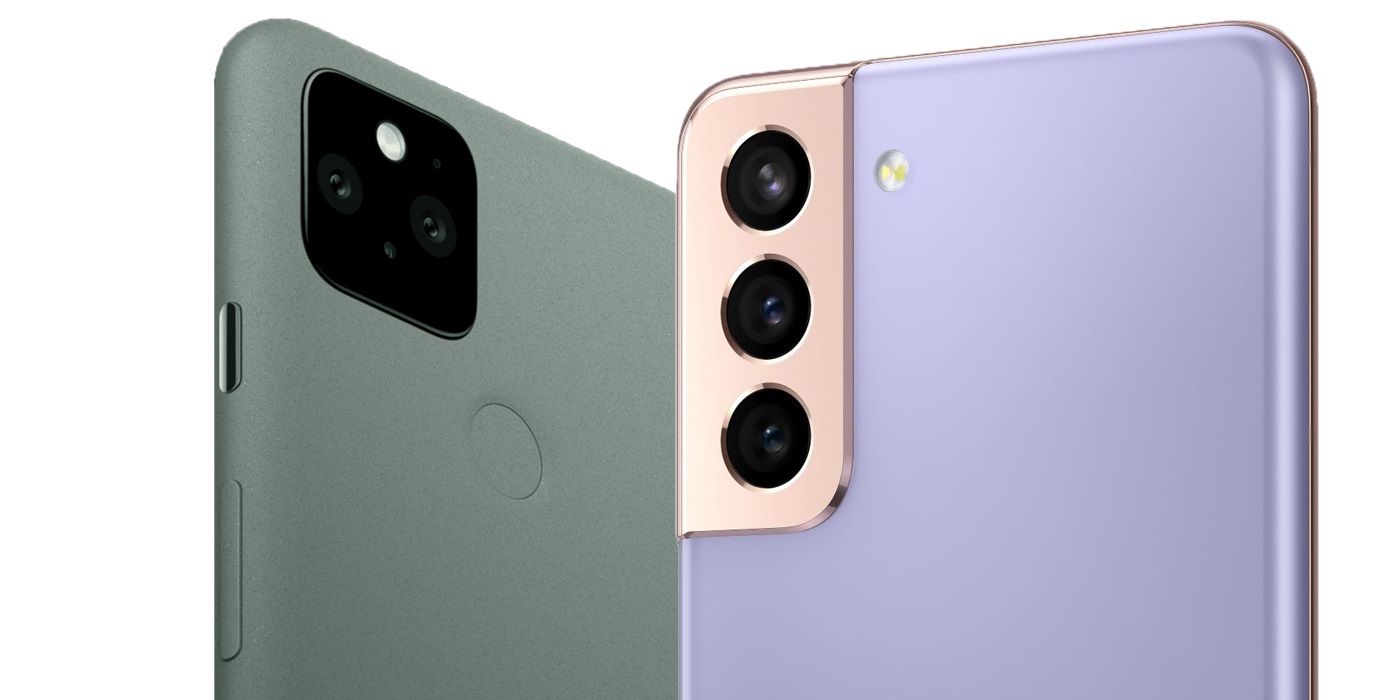
Both Google and Samsung clearly know that most smartphone customers consider being able to take good-quality videos a key concern when buying a new phone. As a result, the Pixel 5 and Galaxy S21 are good choices when mobile photography matters. However, if it comes down to a choice between these devices, which is better at taking photos?
Google's Pixel 5 was first announced alongside the Pixel 4a in September 2020 and became available the following month. The search giant's flagship device runs on the mid-to-upper-range Qualcomm Snapdragon 765G SoC along with 8GB of RAM, comes with 128GB of storage, and can be purchased in the U.S. for $699. Meanwhile, the Samsung Galaxy S21 series launched in January 2021 with three models — the S21, S21+ and S21 Ultra. A far-more powerful flagship line, all the phones run on the new Snapdragon 888 chipset and the base model comes with 8GB of RAM, along with a choice between 128GB or 256GB of storage. The Galaxy S21 starts at $799.
Both phones can take good-quality photos, but the Samsung Galaxy S21 has a clear advantage. It uses a triple-lens rear camera system, 12-megapixel wide-angle and ultra-wide-angle lenses and a 64-megapixel telephoto lens. Meanwhile, Google's Pixel 5 only has two lenses on its rear camera: a 12.2-megapixel wide and a 16-megapixel. On the surface, the Pixel 5's ultra-wide-angle lens may appear to better as it has more pixels, but the pixels are actually slightly larger on the S21's lens (1.4µm as opposed to 1µm) so they theoretically capture more light. (The pixels on the S21's wide-angle lens are also larger.) In addition, the S21's ultra-wide-angle lens has a 120-degree angle of view, whereas the Pixel 5's ultra-wide-angle only has a 107-degree angle of view. This means that Samsung's device can pick up more of the scene for panoramic shots. Obviously, the Pixel 5's biggest drawback is the lack of a telephoto lens. The Pixel 5 can go up to 7X magnification with its Super Res Zoom, while the S21 has a Space Zoom that reaches 30X magnification — even if the results on both will be pixelated.
To compensate for all this, Pixel 5 uses computational photography techniques to produce images that can't be achieved with a traditional camera. Some of these features have been seen in Pixel phones before, such as Night Sight (for low-light photography) and Portrait Mode (which allows for shallow depth-of-field photos). However, the Pixel 5 also includes an updated HDR+ mode that provides exposure bracketing for even clearer and sharper photos. Meanwhile, Samsung uses AI to create better portrait shots and has its own low-light photography solution. Google's camera software updates don't quite make up for the fact that the telephoto camera is absent. For selfies, the Pixel 5 uses a 8-megapixel front-facing camera, while the S21 has a 10-megapixel solution — so even here Samsung has a slight edge.

Both Google's Pixel 5 and the Samsung Galaxy S21 are capable of shooting video in 4K at either 30fps or 60fps with their rear cameras. Like the S20 series before it, the S21 also has the ability to shoot 8K video at 24fps. Currently, there's not that many places to display that video. While many people own 4K TVs, very few own 8K versions. Then again, it's future proofing as when 8K displays become more prominent, S21 users won't have to upgrade their phones. The other advantage is that S21 owners can take stills from their 8K recordings and save them as ultra-high-res (7,680 x 4,320) pictures. When using the front-facing cameras, the Pixel 5 can only shoot 1080p video, while the S21 can shoot up to 4K at 60fps.
The Galaxy S21 also comes with unique video modes. The phone has a Director's View that lets users switch between the rear lenses while recording and a Vlogger View that lets the person shoot video with both cameras at the same time. There's also an updated Single Take mode, which captures photos and video with the click of a button. The Pixel 5 doesn't have these video features but many might consider them gimmicky anyway. Ultimately, the decision between these two will come down to consumers and whether they feel the S21's superior camera features are worth paying a premium for, or whether Google's computational photography tweaks are enough for their camera needs.
from ScreenRant - Feed https://ift.tt/3qewd7G



0 Comments